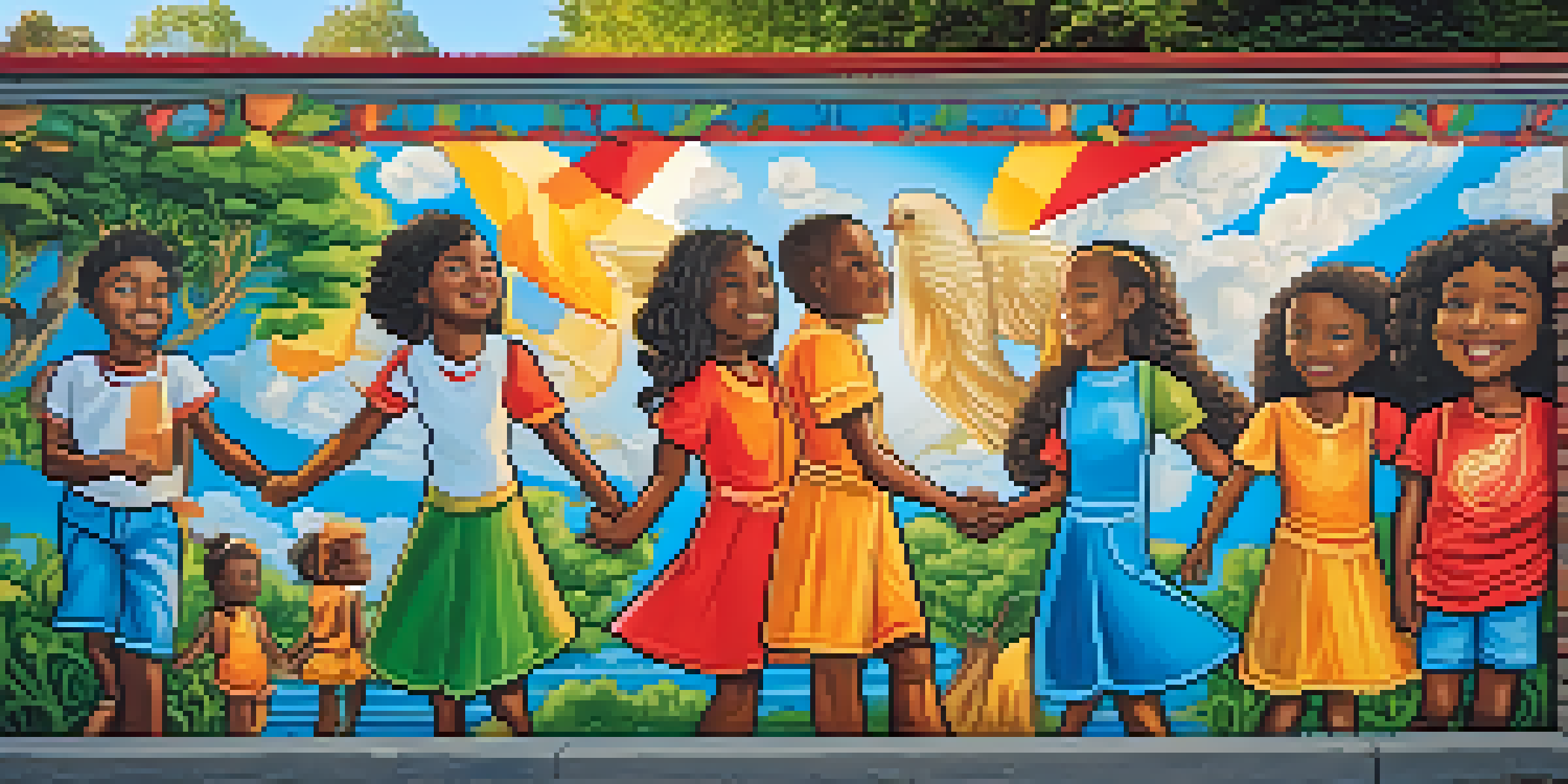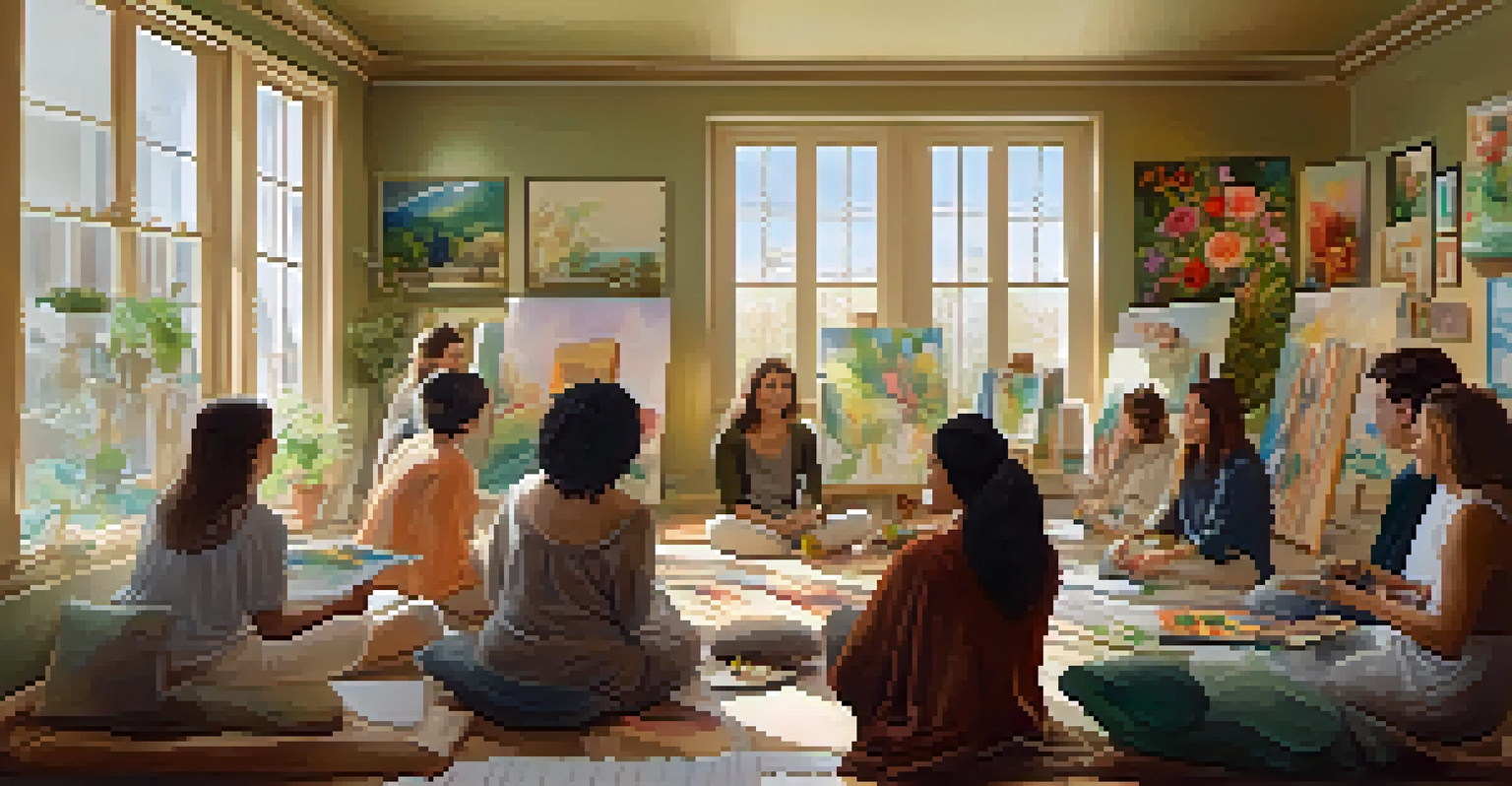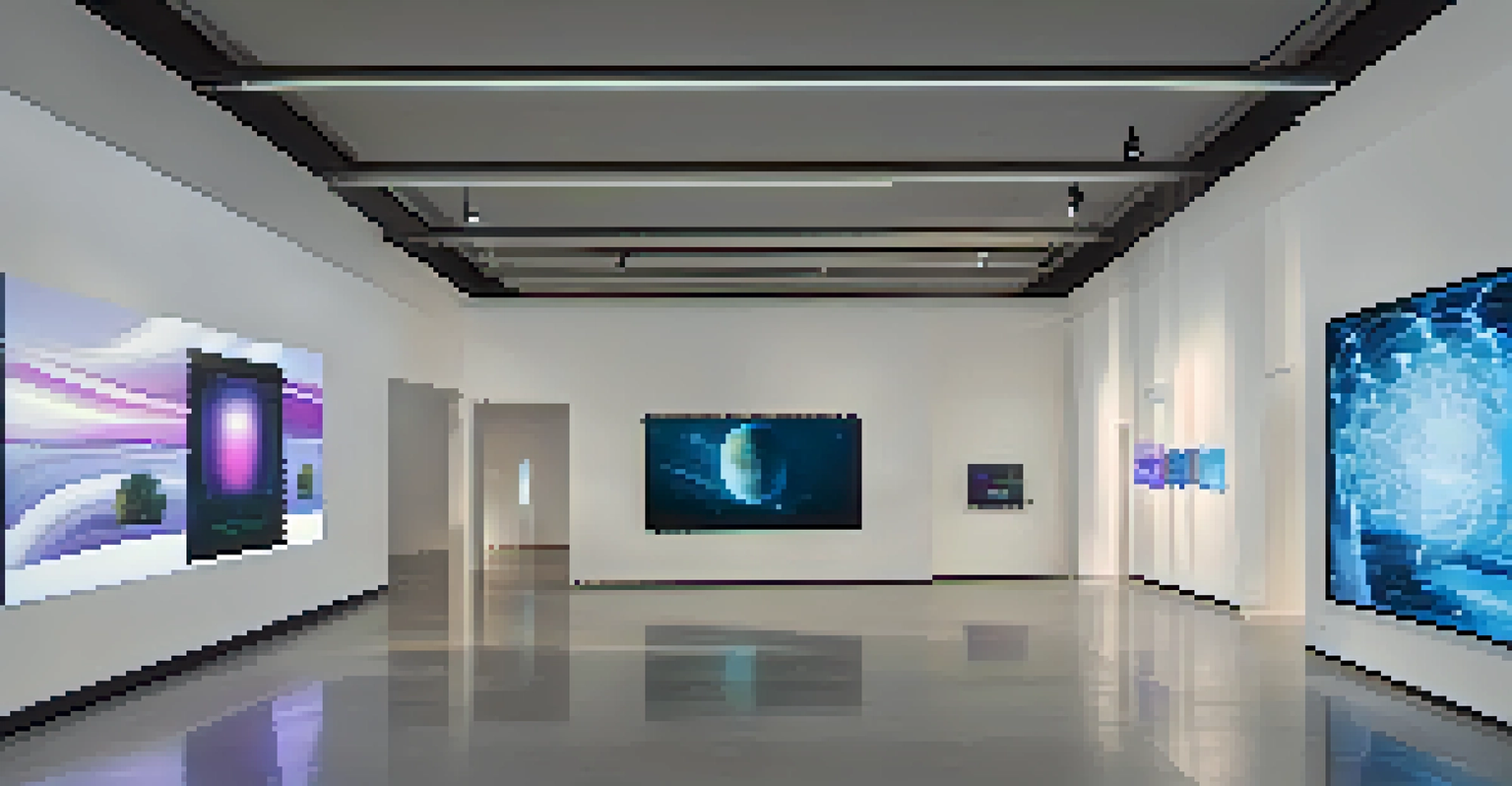Beliefs and Aesthetics: The Role of Art in Shaping Culture

Art as a Mirror of Cultural Beliefs
Art has always served as a reflection of the beliefs held by a society. Whether it's a painting, sculpture, or performance, artworks often encapsulate the values and norms of the time. For instance, the Renaissance period was marked by a revival of classical philosophies, which is vividly captured in the art of that era.
Art is not freedom from discipline, but disciplined freedom.
This mirroring effect is not just limited to historical contexts; contemporary art continues to express the beliefs of modern cultures. From political statements to social justice themes, artists use their work to comment on and challenge prevailing ideologies. A well-known example is the street art movement, which often reflects community struggles and aspirations.
Related Resource
Thus, art becomes a powerful medium through which cultural beliefs are both expressed and examined. By engaging with art, audiences can gain insight into the collective psyche of a society, fostering a deeper understanding of its values and challenges.
The Influence of Aesthetics on Cultural Identity
Aesthetics play a crucial role in shaping cultural identity, as they encompass the visual and sensory experiences that define a community. From architectural styles to fashion trends, these aesthetic choices signal belonging and create a sense of pride. Think of how traditional clothing can evoke feelings of heritage and connection to one's roots.

Moreover, the aesthetics of a culture can influence how it is perceived by others. For example, vibrant art and design from African cultures have gained international acclaim, reshaping global perceptions of African identity. This can lead to greater appreciation and celebration of cultural diversity, encouraging cross-cultural dialogue.
Art Reflects Cultural Beliefs
Art serves as a powerful mirror of society's values, encapsulating the beliefs and norms of different cultures throughout history.
In essence, aesthetics are not merely about beauty; they are integral to how cultures express themselves. They help form a cohesive identity that resonates with both community members and the outside world, often blending tradition with contemporary influences.
Art as a Catalyst for Social Change
Throughout history, art has acted as a catalyst for social change, challenging the status quo and inspiring movements. Artists often use their platform to raise awareness about social injustices, creating works that provoke thought and action. For instance, the works of artists like Ai Weiwei highlight issues of human rights and freedom of expression.
The role of the artist is to make the revolution irresistible.
This role of art in social change is not limited to visual arts; music, literature, and film also play significant roles in mobilizing communities. The protest songs of the 1960s, for example, became anthems for civil rights movements, illustrating how art can unify and motivate people toward common goals.
Related Resource
By inspiring emotional responses and encouraging critical thinking, art has the power to effect real change. It invites audiences to question prevailing narratives and consider alternative perspectives, ultimately contributing to social progress.
Cultural Preservation Through Artistic Expression
Art is a vital tool for the preservation of culture, capturing traditions and stories that might otherwise be forgotten. Through various forms of artistic expression—whether it be dance, music, or visual arts—cultures can maintain their heritage and pass it on to future generations. Indigenous art forms, for example, often encapsulate ancestral knowledge and practices.
Moreover, museums and galleries serve as custodians of cultural heritage, showcasing art that tells the story of a community's past. This not only preserves history but also educates the public about diverse cultures, fostering appreciation and respect. The preservation of art can also spark interest in cultural exchanges and collaborations.
Art Drives Social Change
Throughout history, art has acted as a catalyst for social change, inspiring movements and raising awareness about injustices.
In this way, art becomes a living archive of culture, ensuring that traditions are remembered and celebrated. By engaging with and supporting cultural art forms, society can help safeguard the rich tapestry of human history.
Art and Globalization: Bridging Cultural Divides
In our increasingly globalized world, art serves as a bridge that connects diverse cultures. Through international exhibitions, festivals, and digital platforms, artists can share their work with a global audience, promoting cultural exchange. This interaction often leads to hybrid art forms that blend different cultural influences, enriching the global art landscape.
However, globalization also presents challenges, as local traditions may risk dilution in the face of dominant cultures. It's essential for communities to find a balance between embracing global influences and preserving their unique identities. Artists play a crucial role in navigating this tension, often advocating for cultural authenticity while exploring new artistic avenues.
Related Resource
Ultimately, art in the context of globalization can foster understanding and empathy across cultures. By showcasing diverse perspectives and experiences, artists can help dismantle stereotypes and promote a more inclusive world.
The Therapeutic Role of Art in Society
Art is not only a reflection of culture but also a powerful tool for healing and personal expression. Art therapy, for instance, utilizes creative processes to help individuals cope with emotional challenges and trauma. This therapeutic aspect of art highlights its ability to transcend language barriers and connect people on a deeper level.
Moreover, community art projects often aim to address collective trauma and promote healing within groups. These initiatives can foster a sense of belonging and empowerment, allowing participants to express their experiences and aspirations. An example would be mural projects in communities affected by violence, which can transform public spaces into symbols of resilience.
Art Preserves Cultural Heritage
Art plays a vital role in preserving cultural traditions and stories, ensuring that heritage is passed on to future generations.
Thus, the therapeutic role of art underscores its significance beyond aesthetics; it is a vital component of social well-being. By encouraging creative expression, art contributes to mental health and community cohesion, reinforcing the idea that art is indeed for everyone.
The Future of Art and Cultural Evolution
As society continues to evolve, so too will the role of art in shaping culture. The advent of technology and digital platforms is transforming how art is created, shared, and experienced. Virtual reality, for instance, is opening new avenues for immersive art experiences, allowing audiences to engage with art in unprecedented ways.
Furthermore, the rise of social media has democratized art, enabling emerging artists to gain visibility and connect with audiences worldwide. This shift could lead to a more inclusive art scene, where diverse voices and perspectives are celebrated. It also raises questions about authenticity and the commercialization of art in the digital age.

Looking ahead, the future of art will likely be characterized by collaboration and innovation. As artists continue to respond to societal changes and technological advancements, they will play a pivotal role in shaping cultural narratives and influencing public discourse.